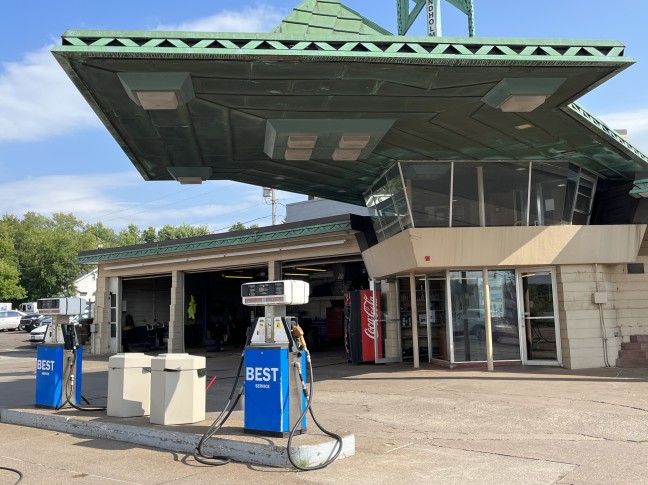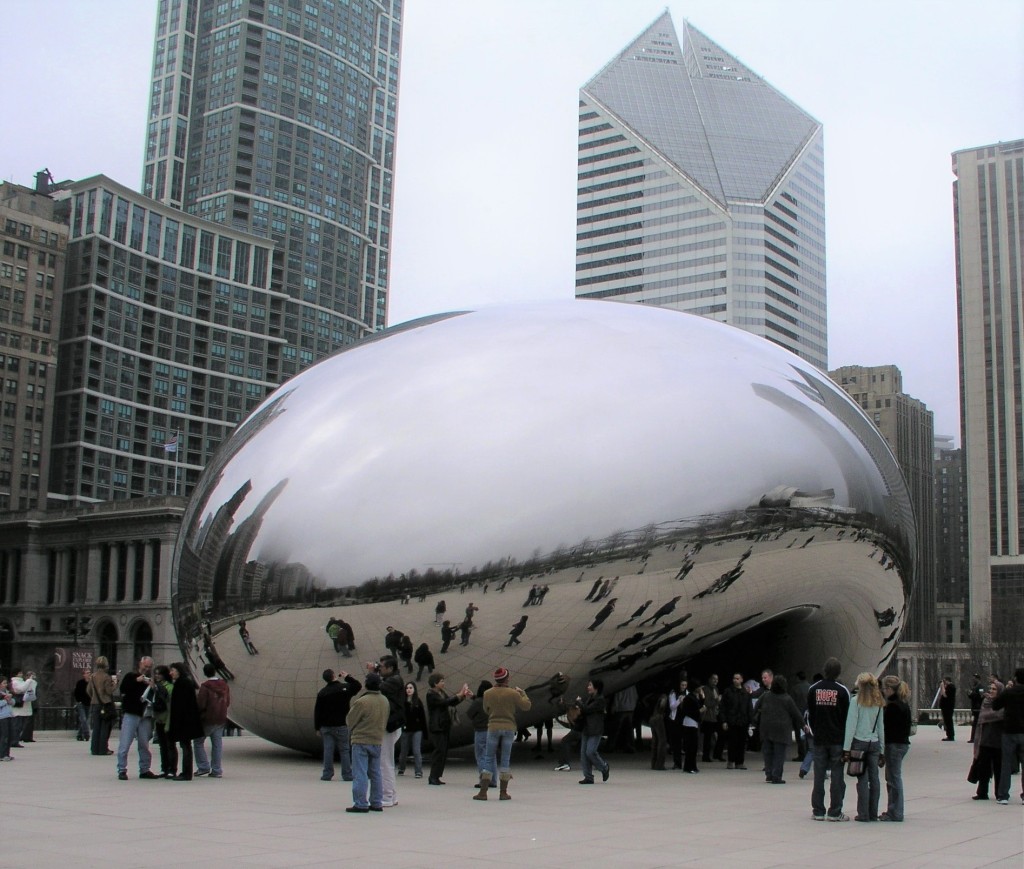I recently wrote on AARP.org about five Frank Lloyd Wright-designed commercial buildings across the country that you can visit, stay overnight in, dine at or take classes.
One of those buildings was the Lindholm Oil Company gas station in Cloquet, Minnesota, which is about two hours north of the Twin Cities. It’s reportedly the only gas station Wright designed–and it’s still open and operating.
With a cantilevered oxidized-copper roof, glass-fronted lounge and skylighted garage bays, it doesn’t look like your average gas station. The building is on the National Register of Historic Places.
Here’s some extra information that wasn’t in that article — plus some photographs I took.

The story goes that Wright approached Best Oil company owner and former client, Ray Lindholm, with the idea of building a gas station in his hometown of Cloquet. Wright had designed a gas station as part of his Broadacre City project–his utopian idea of “the future city”–in the 1930s.
Wright built the Lindholm Oil Company Service Station in 1956-58. The gas pumps were originally designed to hang overhead, but were changed to meet safety regulations, according to the Frank Lloyd Wright Foundation.
Chris Chartier has owned the business, initially with his brother who has retired, since 1982. It’s been a Phillips 66 and a Spur, but it’s currently unbranded and now called R.W. Lindholm Service Station. The building, which he leases, still was owned by the Lindholm family up until 2018, when Andrew Volna bought it.
Chartier lets visitors roam and walk up to the lounge. He told me that tourists visit from all over the world.
You can even see the Cherokee Red ceramic tile embedded into the building that Wright signed, but it was chipped after a camper crashed into the observation deck at some point, Chartier said.

Frank Lloyd Wright. (Sheryl Jean)
The futuristic look of the gas station is slightly marred by an addition of a gray wooden building to the backside.
If you want to learn more about Wright’s Stockman House and other Prairie-Style architecture in Mason City, Iowa, read this article I wrote in September 2023 for the Minneapolis Star Tribune. I visited Mason City earlier this year and stayed overnight in the only remaining Wright-designed hotel there.
Stay tuned: Soon, I’ll post some extra information and photographs about the Wright-designed Marin County Civic Center in San Rafael, California.
















